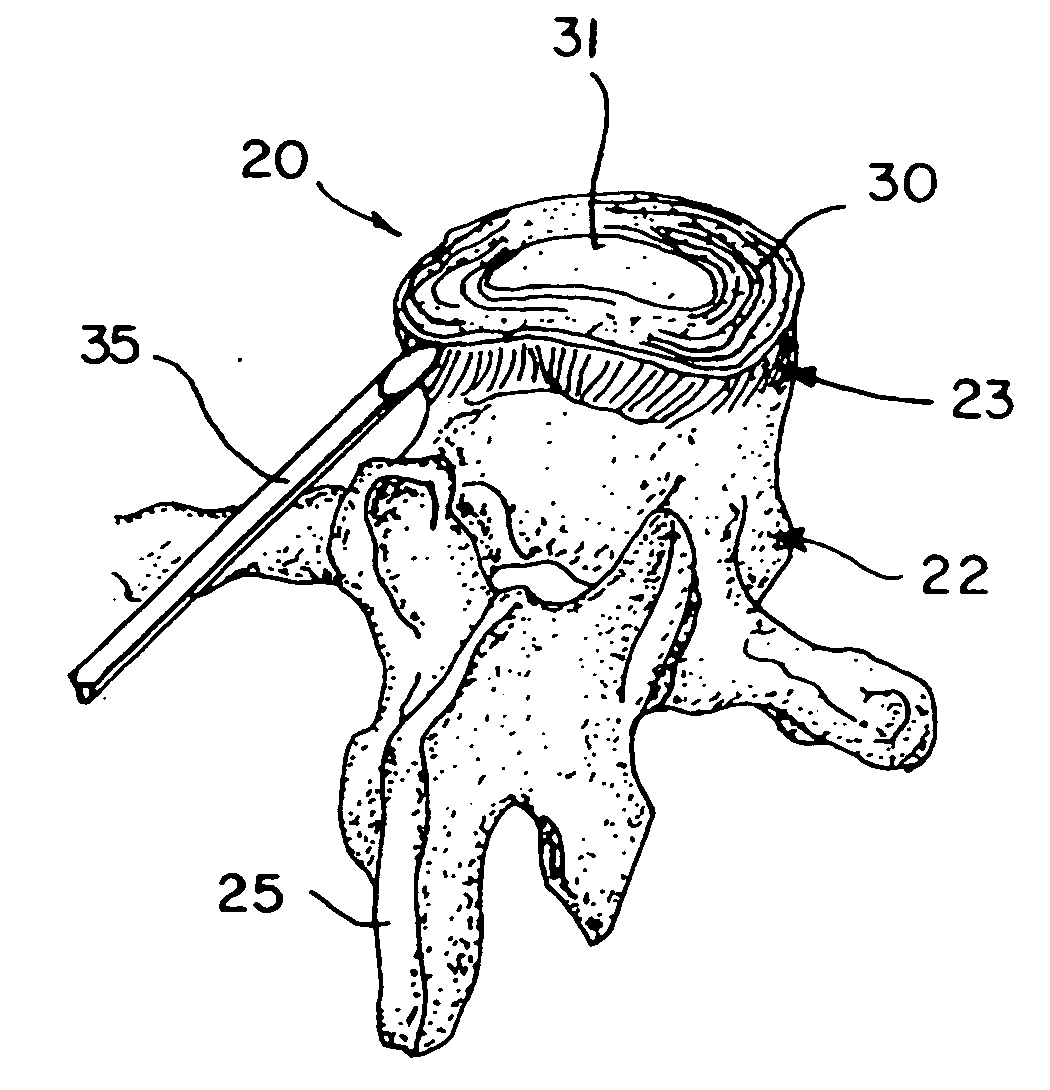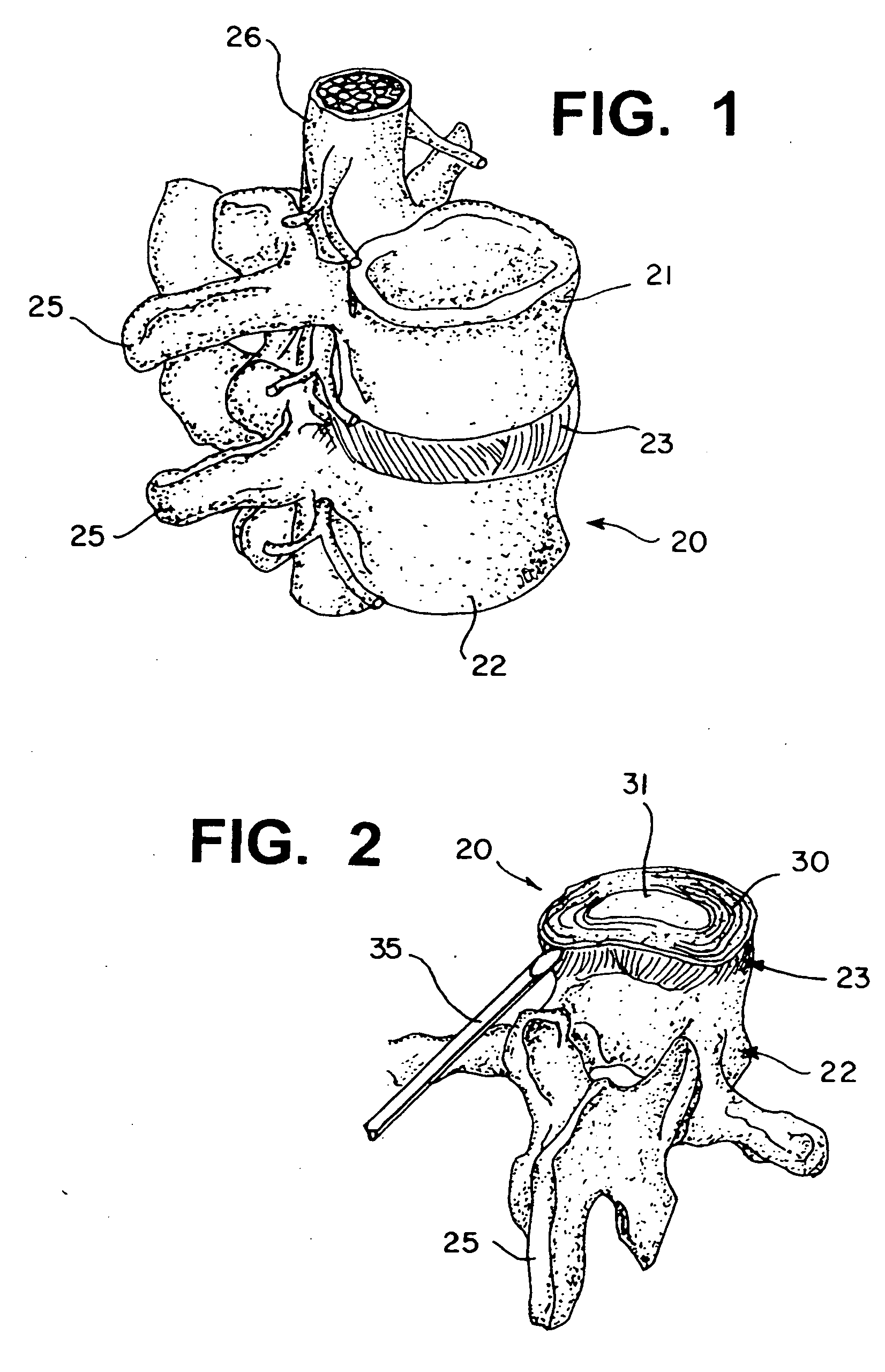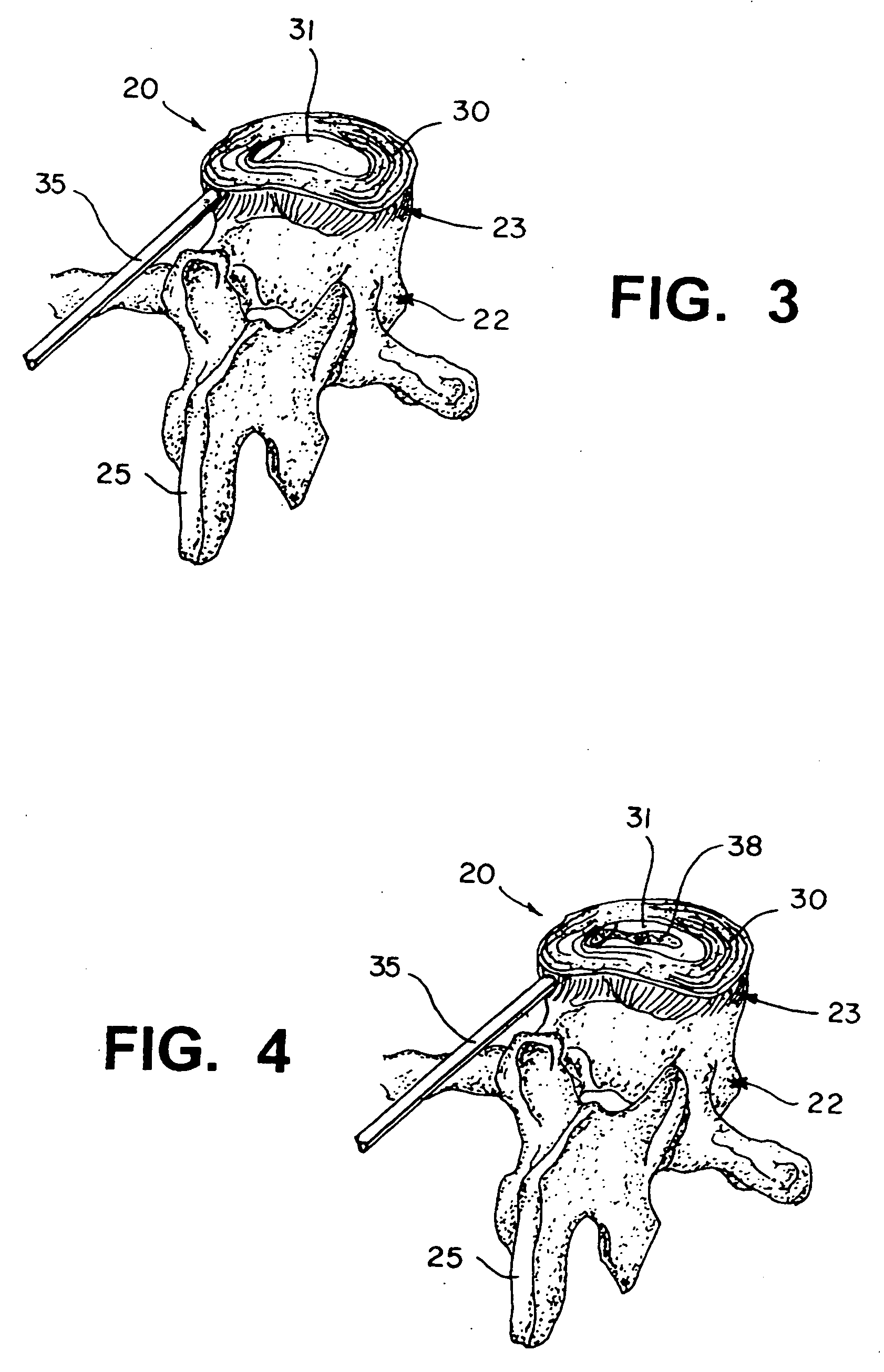Method and compostion for repair and reconstruction of intervertebral discs and other reconstructive surgery
a technology for intervertebral discs and other reconstructive surgery, applied in the field of methods and composting for intervertebral disc repair and reconstruction, can solve the problems of disc loss, loss of fluids and elasticity, and small cracks and tears in the annulus, and achieve the effect of high effectiveness
- Summary
- Abstract
- Description
- Claims
- Application Information
AI Technical Summary
Benefits of technology
Problems solved by technology
Method used
Image
Examples
Embodiment Construction
[0024]By referring to FIGS. 1-4, along with the following detailed disclosure, one of the principal treatment methods of the present invention can best be understood. In this regard, as detailed above, the present invention can be implemented in many areas of a human body. However, one principal application of the present invention is in the repair of intervertebral discs. In addition, the unique formulation of the material employed in the method of the present invention is also fully disclosed. However, alterations or variations in both the method and the formulation of the material can be made without departing from the scope of the present invention. Consequently, it is to be understood that the following detailed discussion and the drawings are provided for exemplary purposes only and are not intended as a limitation of the present invention.
[0025]In FIG. 1, a portion of a conventional spinal column 20 is depicted, with vertebral bodies 21 and 22 shown incorporating intervertebr...
PUM
| Property | Measurement | Unit |
|---|---|---|
| compressible | aaaaa | aaaaa |
| weight | aaaaa | aaaaa |
| strength | aaaaa | aaaaa |
Abstract
Description
Claims
Application Information
 Login to View More
Login to View More - R&D
- Intellectual Property
- Life Sciences
- Materials
- Tech Scout
- Unparalleled Data Quality
- Higher Quality Content
- 60% Fewer Hallucinations
Browse by: Latest US Patents, China's latest patents, Technical Efficacy Thesaurus, Application Domain, Technology Topic, Popular Technical Reports.
© 2025 PatSnap. All rights reserved.Legal|Privacy policy|Modern Slavery Act Transparency Statement|Sitemap|About US| Contact US: help@patsnap.com



